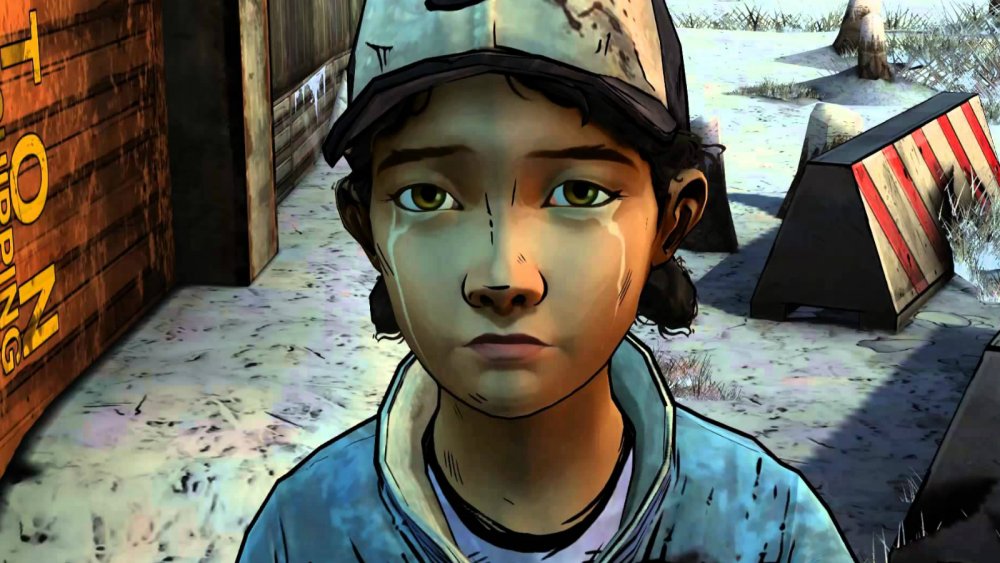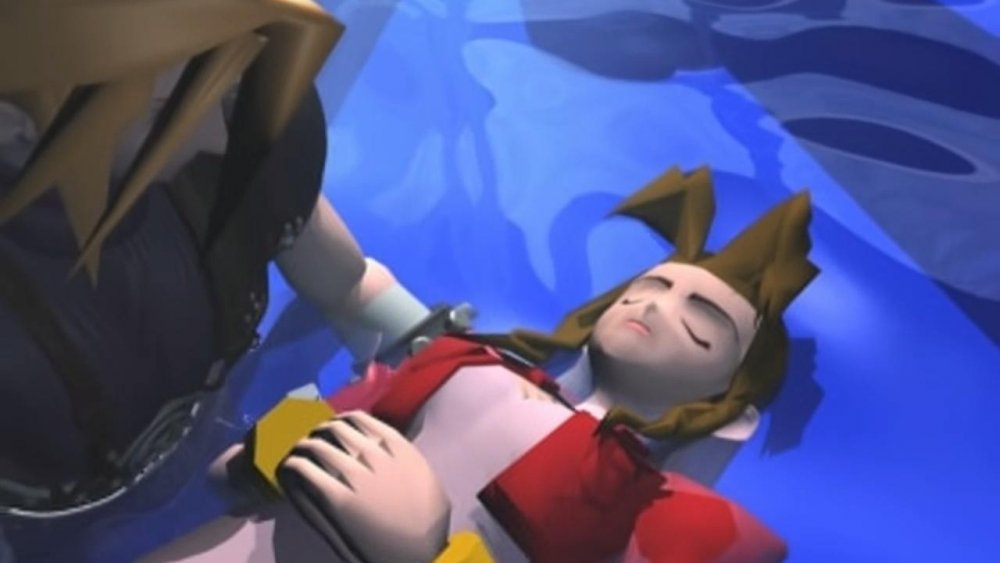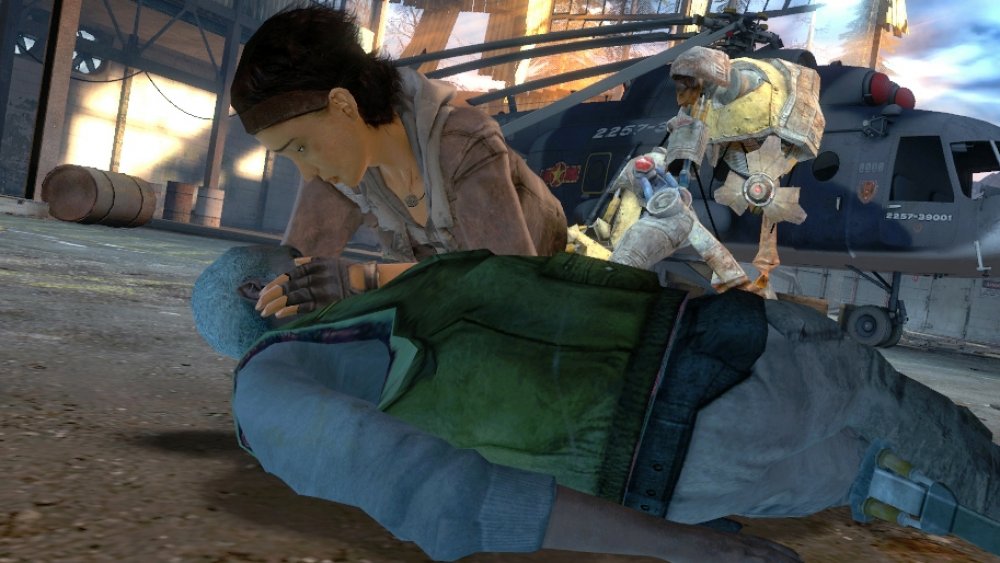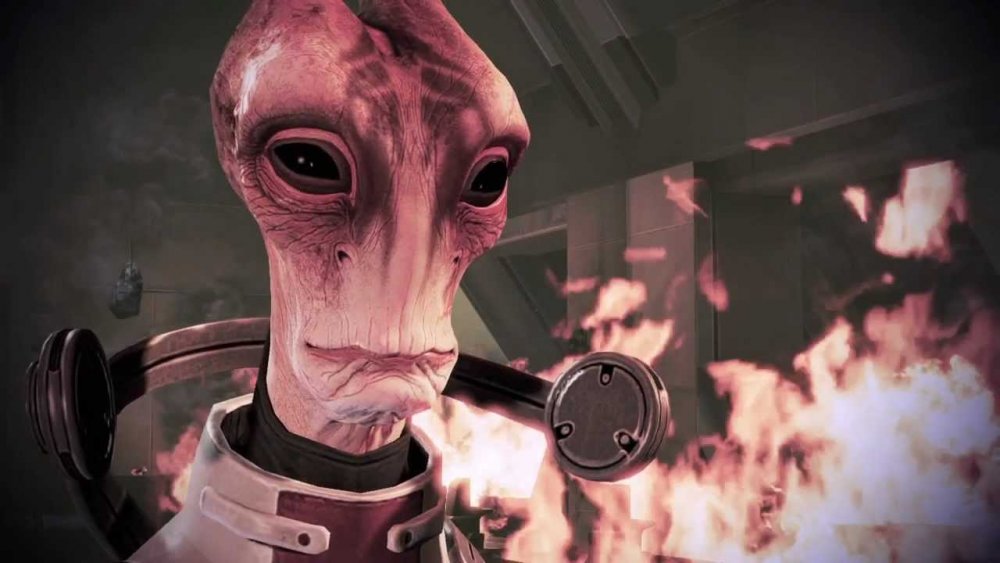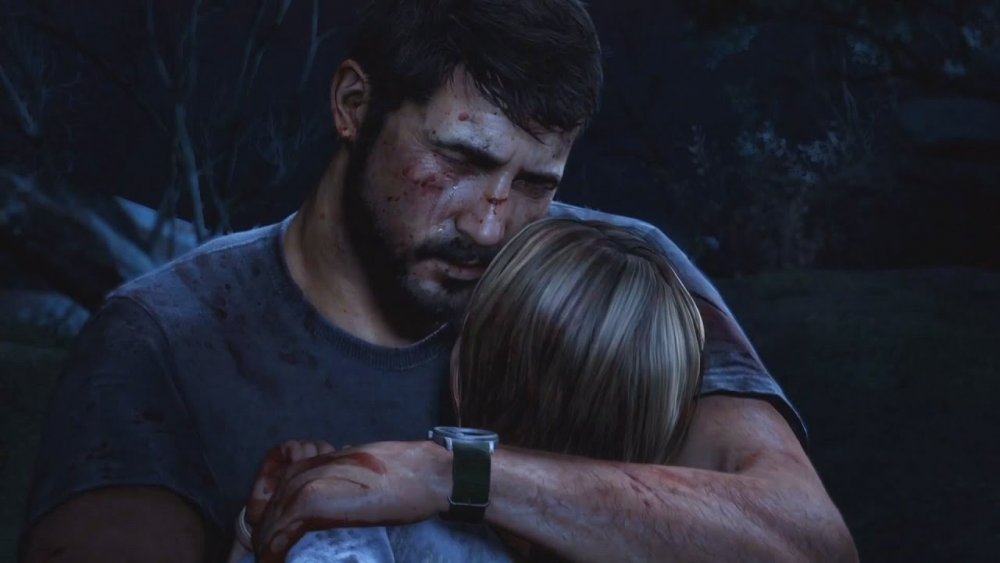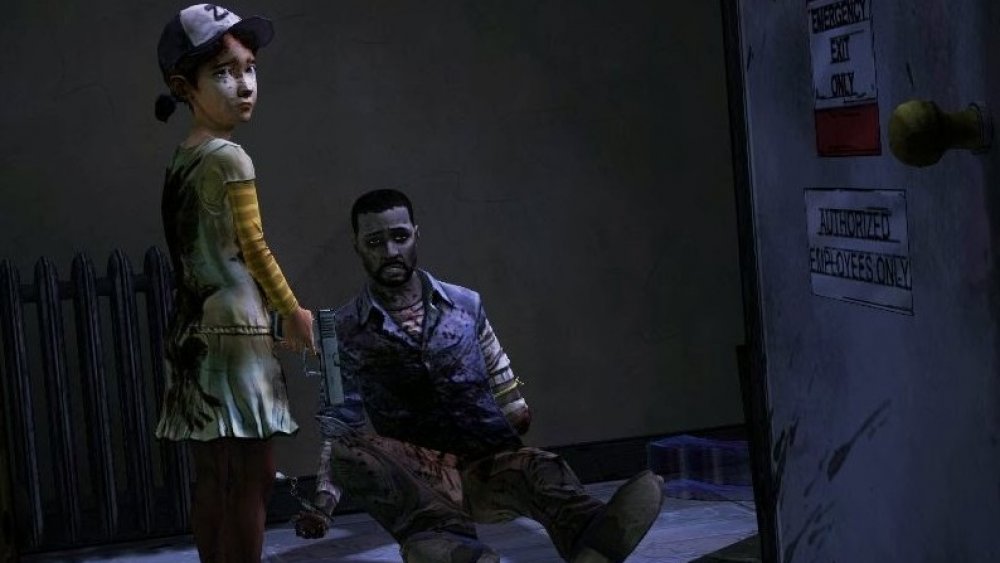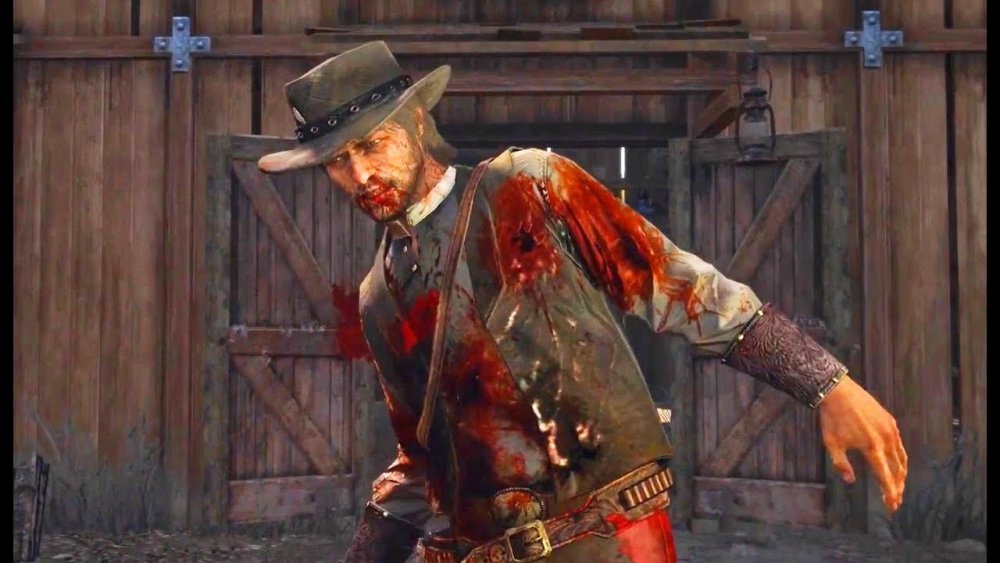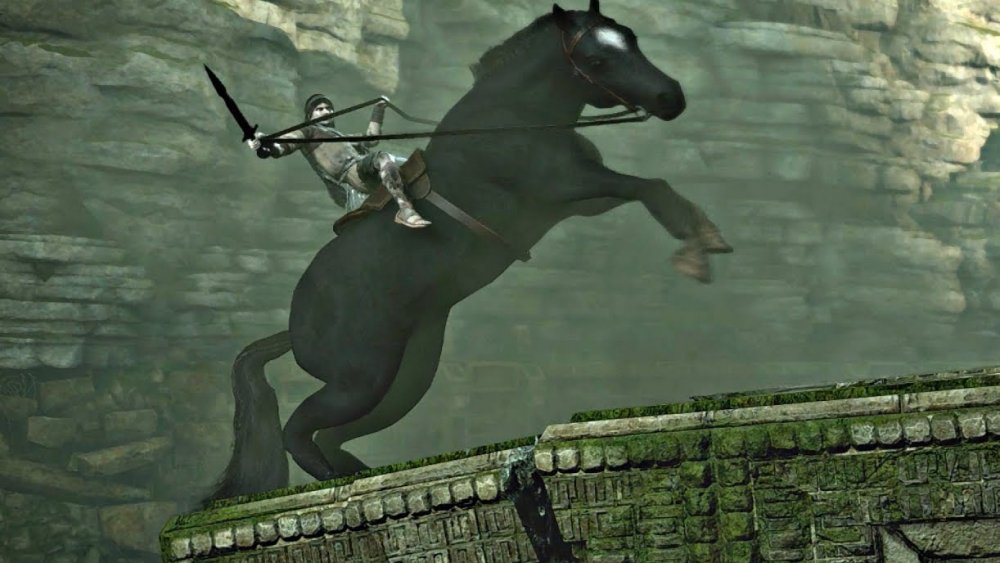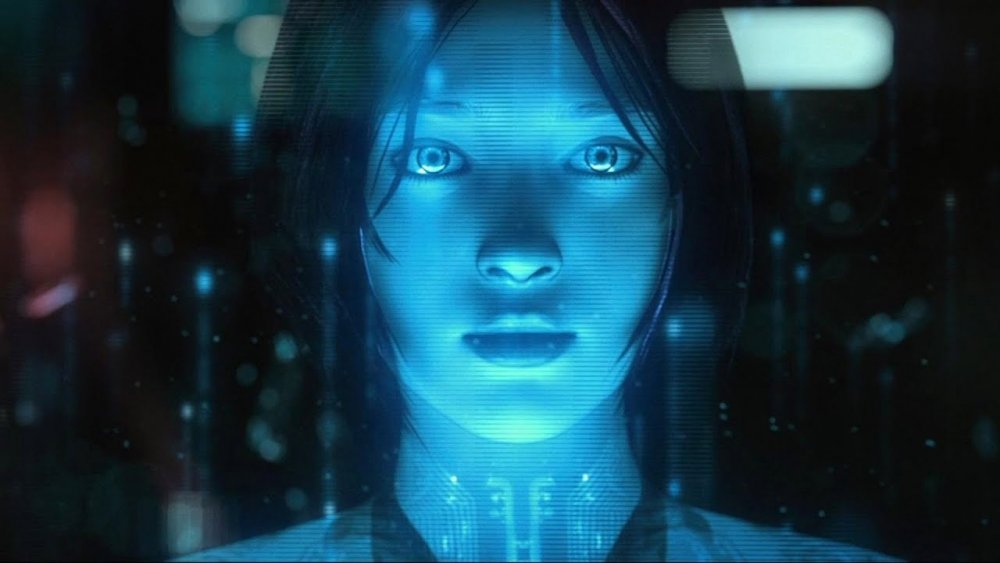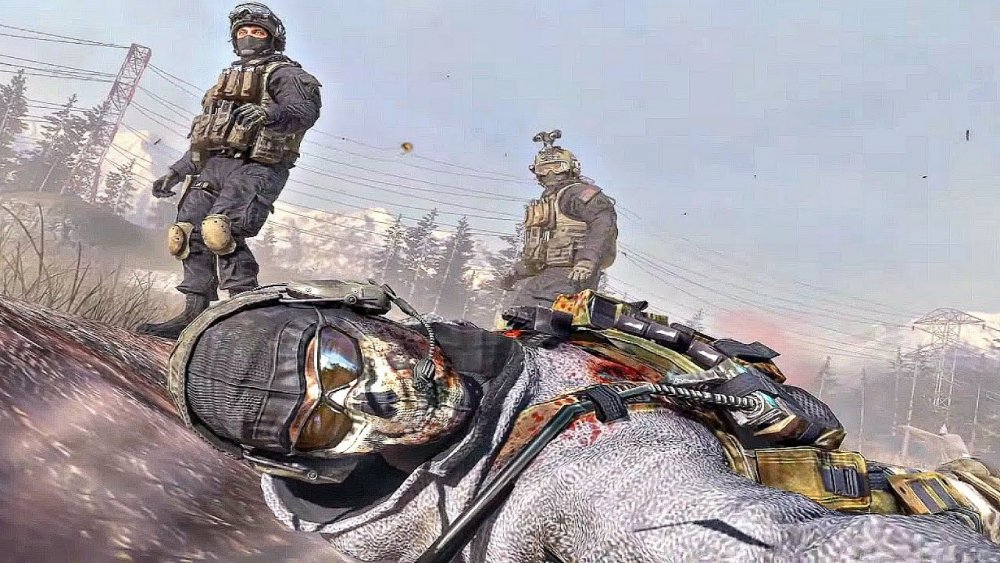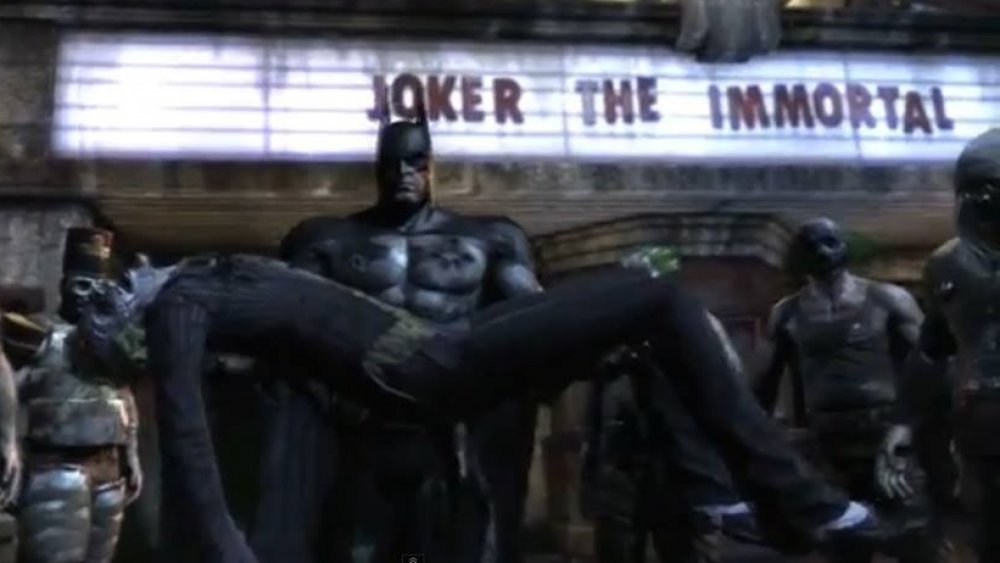The Most Emotional Deaths In Gaming
The most poignant stories come with their share of tragedies, and video games are no exception. The death of game characters, however, can sometimes seem a bit more personal than other mediums. Perhaps it's the interactive nature of these titles, which unfold in a less passive manner than shows or film.
You often spend hours with these individuals, walking in their shoes, making decisions for them, shaping how their lives play out in irrevocable ways. You stand with them when they are at their worst, rejoice when they prevail, and mourn them when they don't. Given the incredible highs of camaraderie and companionship you experience, the losses become even more painful. But would you have it any other way?
Here are some of the saddest deaths in gaming history. Tread carefully. You'll find a large amount of spoilers ahead.
Aerith in Final Fantasy 7
It's been well over a decade since Aerith (or Aeris) Gainsborough, the brave flower girl from Final Fantasy 7, had a sword plunged through her heart by the vile Sephiroth. Though years have passed, many have yet to fully recover from her death. The haunting melody of "Aerith's Theme" that played right after she fell still makes hardened gamers find some dust in their eyes.
In fact, with Final Fantasy 7 Remake on the horizon, it's probably a good idea to keep the tissue box close. There are many reasons this death is particularly emotional, and not just because Aerith was, essentially, an innocent who chose to fight for her planet's future. The game rewarded this selfless choice by killing her when her back was turned. Also, because she was the last of her people (the Centra), her death signaled the end of an entire race.
Eli Vance in Half-Life 2: Episode Two
Eli Vance will return to your computer screen in Half-Life: Alyx, taking the fight to the Combine side-by-side with his daughter. Because the new game is set before the events of Half-Life 2: Episode Two, fans are all too aware this might be their final chance to see him in action.
Eli was a physicist at the Black Mesa Research Facility where he worked in the Anomalous Materials lab. He was a founding member of the City 17 Resistance, and a single father who looked after Alyx after his wife, Azian, died during the events of Half-Life. He later perished at the hands of a grub-like but super-intelligent Combine creature called Advisor as he tried to keep Alyx safe. Eli was always a fan favorite, and there has long been speculation about whether he could yet be alive or be revived.
Mordin in Mass Effect 3
The Mass Effect games have seen a lot of deaths, and many of them depend on the choices you make as Commander Shepard. Mordin Solus, the affable salarian scientist, is one of the hardest to recover from.
Salarians are an intelligent, amphibious race in the Mass Effect universe with slender, elongated bodies, large eyes and, two horns. As bizarre as it may sound, their mannerisms and speech are rather cute. At one point in their history, they made the (questionable) decision of creating a biological weapon called the genophage that could have potentially caused the extinction of another sentient race, the krogans.
In Mass Effect 3, assuming he's survived to that point, Mordin is working to cure the genophage so that a truce might be reached between two warring races. Not everyone wants the genophage cured, and Shepard can choose to shoot him to keep him from doing so. If Shepard allows him to forge ahead, Mordin still dies in an explosion as part of a sacrificial act.
Sarah in The Last of Us
No matter how many times you replay the opening chapter of The Last Of Us, when young Sarah dies in her father's arms just minutes into the game, only the stoniest of hearts remains unmoved. Not only did The Last of Us hit players with this heart-breaking event, it also moved thousands with a stellar narrative that arguably redefined the standards for immersive, emotive gaming stories.
The premise of this post-apocalyptic survival horror title from 2013 focuses on a infection that turns humans into aggressive, cannibalistic hosts called the "Infected." While fleeing the hordes of Infected, Joel carries his injured daughter into the forest, away from the madness. They encounter a soldier, but instead of helping them, he shoots at them. Joel attempts to save Sarah, but she gets shot in the stomach and dies. What the game deserves credit for is the way the scene plays out. You can hear Sarah, but you don't see her death. Not that it makes it any easier.
Lee Everett in The Walking Dead
Father–daughter scenes tend to remind gamers of Clem and Lee from The Walking Dead, even though they aren't blood relations. In this episodic zombie adventure, Lee Everett becomes a father figure to eight-year-old Clementine after rescuing her from the tree house she was hiding in to stay away from the zombie "walkers."
In the fifth and last episode of The Walking Dead: Season One, titled "No Time Left," a nine-year-old Clem is faced with the devastating choice of shooting Lee to keep him from turning, or leaving him to become one of the walkers. What makes the scene especially heartbreaking is that you know this is no decision for a child to have to make or live through. Moreover, with The Walking Dead's focus on narrative and interactive gameplay, that last scene between Clem and Lee hits you right in the feels. Even though it is Lee who dies, your heart breaks for Clementine.
John Marston in Red Dead Redemption
Red Dead Redemption is set in the American Wild West in the early 20th century. The game tells the story of ex-outlaw John Marston who buys his family's safety in exchange for hunting down his former gang members for the Bureau of Investigation. Agent Ross of the Bureau double-crosses him after John fulfills his end of the contract, and John is cornered at his ranch. After sending his family to hide, he walks out to his final gunfight to give them time to escape — arguably one of the most heroic and tragic moments in gaming.
Though Red Dead Redemption gives you a chance to fight back, John Marston ultimately falls. It's a gory, cruel scene, for he is vastly outnumbered. Yet, even after taking multiple bullets, it's a good half a minute of so before he finally succumbs to his injuries. The cruelty of the scene is exacerbated by the camera focusing on Ross lighting a cigar as he waits for John to die.
Agro in Shadow of the Colossus
Losing a companion is never easy, especially when the victim is a devoted and beloved horse. When she apparently sacrifices herself to save her human, it becomes even more of a tear-jerker.
This is exactly the situation that unfolds in Shadow of the Colossus when Agro, main character Wander's loyal stead, plummets to a nigh-certain demise. Perhaps the greater tragedy is the fact Agro survives, but Wander never finds out. Given Wander's ambiguous moral compass, which becomes clearer as the story unfolds, there may be some justice to this.
Shadow of the Colossus is an unusual game in that it provokes a good amount of internal conflict as you lead the protagonist in his mission of killing the 16 majestic colossi. As you play, you realize the gigantic creatures are being provoked into fighting, and might be benign in their own way. That you may be playing not as a hero, but a villain. This makes Agro's sacrifice and Wander's distress an oddly emotional scene.
Cortana in Halo 4
Even though you know from Halo 5 that Cortana lives, it doesn't make her "death" in Halo 4 any less poignant. Not even when you consider that she was never really "alive" in the real sense of the word.
During the course of Halo 4, Cortana reveals she is experiencing the state of enhanced self-awareness called the "rampancy" that will eventually claim her. At the end of the game, Cortana sacrifices herself to save her companion, the human super-soldier John-117, and also the human race. Her loss, though, is much more than a machine being snuffed out, because at that point you know her as no different from a living, feeling creature. Her last words, "Welcome home, John," are a testimony to her bond with her friend, as well as her humanity.
This concept of rampancy was borrowed (albeit in a modified form) from the Marathon games, and refers to a point when an AI can over-ride its programming and begin to think for itself. You might view this is a good thing, as it makes them more human-like, but it is actually a death sentence. As per Halo's rules, any AI that survives for longer than seven years becomes rampant, and eventually dies.
Simon Ghost Riley in Call of Duty: Modern Warfare 2
Simon Riley, better known as Ghost, is a British Special Forces operator who appears in some of the Call of Duty games. Ghost, a member of the elite Task Force 141, embodies his nickname by wearing a skull-patterned balaclava. He is quite the fan favorite, particularly for his British-isms, and his death in Modern Warfare 2 shocked Call of Duty fans and broke many hearts. (In the recently released Modern Warfare 2: Episode 2, though, a Battle Pass will let you unlock Ghost.)
In the mission "Loose Ends," Ghost and his companion, Roach, zero in on the location of villain Vladimir Makarov's safehouse, While they don't manage to get him, they stumble upon a treasure trove of information they retrieve. Heading back to the extraction point, they take heavy fire, which injures Roach and kills some of their squad mates. Though Roach and Ghost both make it back, they are betrayed by their commanding officer General Shepherd who shoots them in the chest at point-blank range. The ignominious death outraged fans, and it remains to be seen how his rising from the dead affects the game.
The Joker in Batman: Arkham City
This one is complicated, as the Joker is most definitely a bad guy and perpetrates all kinds of atrocities. Yet, his death is one that invariably comes to mind when you think of the saddest deaths in the history of gaming. Perhaps this is because, as antagonists go, he is definitely in a class of his own. He is one of the most iconic villains in pop culture, the perfect foil to Batman. Little wonder that he was immensely popular with fans.
The Joker's downfall comes in Batman: Arkham City during the final face-off with Batman, but it is his own actions that cause his demise. Batman has the antidote that will cure him, but, in a moment of panic, the Joker stabs Batman, making him drop the vial containing the antidote. As a horrified Joker starts to wither away, Batman tells him, "Even after everything you've done, I would have saved you."

